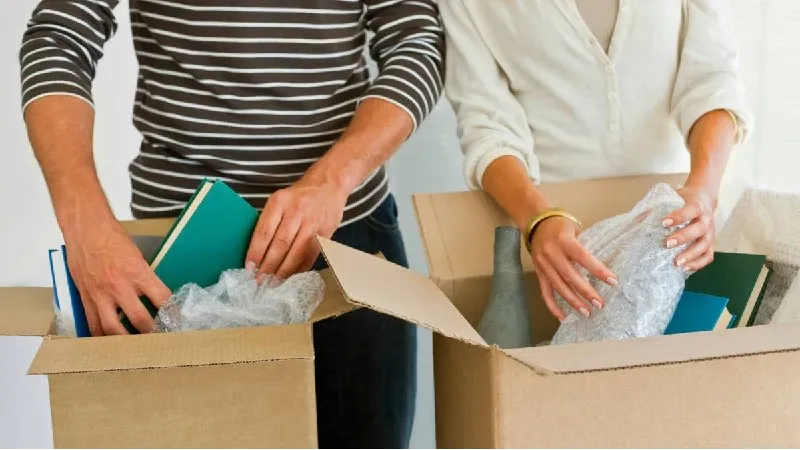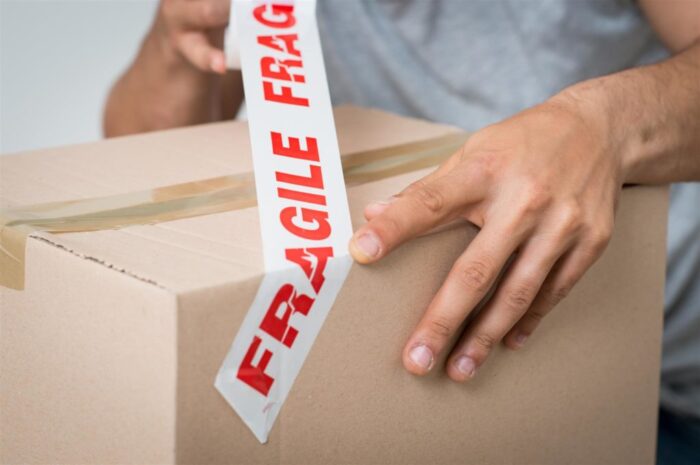
Moving from one house to another can be stressful, especially when it comes to packing and transporting fragile and breakable items. Even the most cautious people can occasionally suffer from a broken item during the move. To minimize risk, it is important to take extra care when packing delicate items for a move.
In this guide, we will provide you with tips on how to protect your fragile items during a move, including advice on preparing your belongings before packing, proper use of packing materials and boxes, and safe loading techniques. By following these helpful guidelines, you can be sure that delicate belongings such as plates, dishes, glasses, and collectibles stay safe throughout the move.
Proper Packing Materials

When it comes to packing delicate items, having the right materials is key. There are many different ways you can protect your fragile items during a move, and the most important first step is to make sure you have all the materials you need. Here is a list of supplies for packing delicate items that you should assemble before getting started:
-Styrofoam sheets
-Packing peanuts
-Stretch wrap
-Heavy-duty tape
-Newsprint padding
-Cardboard boxes (with lids) in several sizes
-Furniture blankets or pads to protect large furniture pieces
Once you have gathered all of your materials for a safe move, you’re ready to start packing. Make sure not to overfill any of your boxes; and if possible, use boxes that are specially designed for fragile items such as china or glassware.
Packing Process
Begin by wrapping each item individually in packing paper or bubble wrap. For larger items such as furniture, lay down a blanket or tarp before wrapping so that any debris remains on the surface instead of sticking to the object being moved. Secure each package with tape and clearly label any boxes containing fragile items with a “Fragile” sticker or other visible indication so they are easily identified during transit.
Start loading your boxes into the truck after they have been wrapped and securely labeled — if possible, try to place heavier objects on the bottom of stacks in order to minimize movement during transit. Once all boxes are loaded onto the truck, secure them within tie-downs or contract straps in order to prevent shifting during transit.

Storage Tips
Here are a few tips to follow when storing fragile items:
Choose the Right Box: Make sure you select an appropriate box that is sturdy enough to support the weight of your fragile items. Medium- or heavy-duty boxes made of corrugated cardboard are generally better equipped to handle delicate cargo than lighter-duty boxes.
Organize Similar Items Together: Pack plates together in one box and glasses together in another. Store heavier items on the bottom with lighter ones on top, so that heavier products do not press down on lighter ones during travel.
Label Your Boxes: Fragile boxes should always be labeled “FRAGILE” in large lettering—this will help ensure handlers take extra caution when transporting your possessions. Additionally, it is also a good idea to number each box and make a list including details like what is inside (i.e., dishes)and how many pieces are packed inside (i.e., 8 dinner plates). That way if one box gets broken or crushed in transit, you know exactly what needs replacing without needing to open all of your boxes after they arrive at their destination.
Unpacking Guidelines
Carefully inspect all containers and packaging for damages or signs of moisture or pests before opening any box, bag, or container.
Open boxes and bags carefully, taking care not to let any contents fall out of the package. Take special caution with bubble wrap and Styrofoam packing peanuts, as these materials can easily scatter.
Remove individual pieces from boxes gradually and be mindful of how they’re positioned in the package so they don’t rub against each other while being unpacked.
Check to make sure all components are present before disposing of packing materials. Put aside small parts such as nuts, bolts, and screws in a safe place until you’re ready to use them later on reassembly projects.
Clean all surfaces with a soft cloth before reassembling any piece of furniture or equipment to remove dirt picked up during transport. Vacuum out shelves and drawers while they’re empty so they will be dust-free on arrival at their new home.
Once you have accounted for each item and its components, dispose of all packing materials responsibly according to your local waste disposal regulations.

Common Mistakes to Avoid
The success of a safe move usually depends on how well the fragile items are packed. To help you transition your beloved treasures properly, we’ve outlined some common mistakes to avoid when packing delicate and fragile items.
-Failure to use quality packing materials: Using the right materials will give your fragile items extra support and protection. Make sure you have bubble wrap, packing peanuts, or other filler materials that can be used to help prevent breakage.
-Overloading boxes: The weight of fragile items can cause the box to become too heavy and break open in transit, leading to damaged possessions. It’s a good idea to tape up the bottom of each box before loading it with delicate items.
-Improper padding techniques: Even if you use quality packing materials for cushioning, improper techniques can lead to breakage in transit. Make sure to securely wrap individual objects in bubble wrap or paper and leave some space between them for extra cushioning.
-No labeling: To avoid confusion and ensure prompt delivery at the end of your move, make sure you clearly label any boxes containing delicate items with a “FRAGILE” sticker. This is especially important if you decide to hire movers, as they may take special care when handling labeled boxes containing valuable or sentimental personal belongings.
Conclusion
When packing fragile items, safety should be your first priority. As long as you take the time to properly wrap and pack your items and use the right materials, you can help ensure that they arrive at their destination safely.
Carefully bubble wrap and box each individual item, making sure everything is cushioned well within the box. Lastly, if needed for heavier/fragile pieces, make sure to use a sturdy moving cart or dolly with straps to tie down your boxes.
Following these steps will help ensure that your delicate items stay safe during a move.











